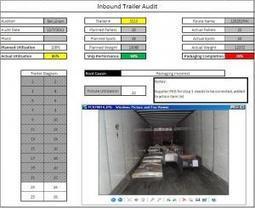Feb 7 2012
Takt times and falling sales: How to Respond?
Question from Jean-Baptiste Bouthillon on The Lean Edge:
We have all learned that overproduction is muda, and that production must follow the takt of customer demand.
Is there a lean way of dealing with falling sales ? Should we just adjust production to customer takt time or stabilize sales by giving rebates ?
Is it important to level sales and give some stability to production or should we just adjust the production takt time ?
My response:
You question implies that takt time is only a function of customer demand. It is not. When you calculate it, you divide your production time by the demand, which means that it is as much a function of how long you decide to work as of how much you have to produce. Without any change in customer demand, you double the takt time by working two shifts instead of one.
The takt time of a production line is the time that elapses between two consecutive unit completions when the line runs. It is not the rate at which customer orders arrive.
So how do you respond to falling sales?
You have to distinguish between fluctuations in sales, for which you should not change the pace of production, and major changes, for which you should.
Once you have set up a large assembly line to work at a takt time of 57 seconds, changing it to 60 seconds is a major effort, involving the balancing of tasks among stations and adjustments in part supplies. In car assembly, unless you are hit by something like the Fukushima earthquake, you don’t do it more than once in four months, even if you are Toyota. During this period, you use heijunka to respond to fluctuations in mix, and adjust overtime for fluctuations in total volume.
If you have a major downturn, you have to reduce production, and the challenge then is to do it without going bankrupt while retaining the work force you spent so much time and effort developing.
It is in such times that having your money tied up in inventory can bankrupt you. When the recession hit in 2008, management in manufacturing companies suddenly took an interest in working capital, but it was too late. Downturns come brutally, and it is when they occur that you must be ready.
Keeping your work force intact and prepared for the next upturn is just as essential. So you stop using temps, cut all overtime, go on four-day weeks, or three-day weeks, and use the available time to solve nagging engineering problems, experiment with new technology, etc. I remember an auto parts plant in Japan, in which recession time had been used by a team to build in-house a pick-to-light system with their own AGV out of Creform. Even though they did not explain it, you could tell that they would know exactly what to require from vendors and how to deploy this technology when the upturn came.


Feb 24 2012
Bodo Wiegand on Shop Floor Management as Leadership Responsibility
Bodo Wiegand heads the Lean Management Institute, which is the German affiliate of the Lean Enterprise Institute. The following is a translation from German of a large excerpt from his February, 2012 newsletter, Wiegand’s Watch:
Share this:
Like this:
By Michel Baudin • Blog clippings 1 • Tags: Lean, Lean assembly, Lean Logistics, Lean manufacturing